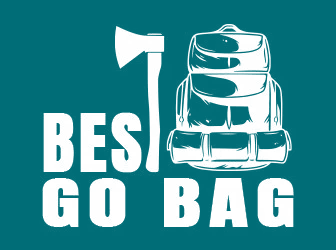There are very good reasons millions of people flock to Florida every year for vacation.
Warm weather, 1,350 miles of coastline and 30,000 lakes provide countless opportunities for rest and relaxation. As well as swimming and water skiing. Plus scuba diving, snorkeling, boating, fishing and more.
Water and Florida go together like a hand in a glove. But what about when it comes time to drink the water?
Depending on where you go in the Sunshine State these days, that could be a problem.
On the Verge of Collapse
Manatee County is located on the western edge of Florida. It includes Bradenton and is home to more than 400,000 people.
Recently Governor Ron DeSantis declared a state of emergency there. A toxic wastewater pool began leaking into the aquifer supplying drinking water.
As of this writing, the reservoir was on the verge of collapse. Hundreds of residents were ordered to evacuate their homes.
The wastewater pond is located at the site of a former phosphate processing plant.
‘Imminent Uncontrolled Release’
The Manatee County Public Safety Department warned area residents of a “significant leak.”
And that evacuation was necessary due to an “imminent uncontrolled release of wastewater.”
Jake Saur is the director of public safety in Manatee County. He said, “A portion of the containment wall at the leak site shifted laterally.” This signified that “structural collapse could occur at any time.”
Workers were pumping breached water into a 35 million-gallon pond containing a liner. But there were still about 300 million gallons of water in the reservoir.
A Failure to Meet Standards
Florida is hardly alone when it comes to drinking water issues. Systems serving millions fail to meet state and federal safety standards.
Even when water does meet those standards, many argue the standards are set too low to protect people.
Places like Flint, Michigan and Newark, New Jersey make the headlines. But the problems are widespread.
And that’s despite trying to legislate the problem away with various laws. Including the Clean Water Act and the Safe Drinking Water Act. And the Toxic Substances Control Act.
86,000 Chemicals Listed
David Sedlak is an environmental engineer at the University of California-Berkeley.
“Great progress was made,” he said. “But the more we study water supplies and the more stress put on existing water supplies, the more problems we discover.”
The EPA lists approximately 86,000 chemicals in its substance inventory. Many of them could find their way into drinking water.
Disinfectants including chlorine can handle microorganisms. But they do nothing against synthetics polluting our water.
“We are ingesting, in micro quantities, a cocktail of chemicals all the time.” So says Seth Siegel. He’s the author of Troubled Water: What’s Wrong With What We Drink.
Many Military Installations Affected
Another alarming area for water contaminations is on and near military bases.
The Environmental Working Group says this. PFAS substances are in the tap water or groundwater at 328 U.S. military installations.
These can include perfluoroalkyl and polyfluoroalkyl substances. As well as perfluorooctane sulfonate and perfluorooctanoic acid.
These contaminations often find their way into the tap water of nearby residents.
They’re caused mainly by firefighting foam used on those bases for decades.
Bottled Water Distributed
One of the recent cases occurred in late February. The Associated Press reported high levels of PFAS at Luke Air Force Base. It’s near Phoenix, Arizona.
The chemicals were also discovered in the drinking water of 1,600 nearby homes. And some businesses. As many as 6,000 people were drinking that water.
In response, the Air Force distributed bottled water to thousands of residents. They’ve been told their tap water is safe for bathing and laundry. But that they should use bottled water for drinking and cooking.
Those deliveries are expected to continue. At least until a long-term water filtration facility can be established. Hopefully very soon.
PFAS Regulations Lacking
Tests from the Valley Utilities Water Company found the contamination. The utility claims its water meets all EPA and Arizona drinking water standards.
Unfortunately, this may be true. That’s because PFAS are not regulated by federal or state environmental agencies. This despite the fact that PFAS substances have been linked to cancer and birth defects.
These chemicals also come from non-stick frying pans and stain-resistant carpets. They’re called “forever chemicals” for their staying power. It’s estimated that 200 million Americans may be drinking PFAS-contaminated water.
The CDC warns that exposure to high levels of PFAS might raise the risk of COVID-19 infection. And lower vaccine efficacy.
Attacking the Problem Head-On
It’s impractical to remove all water that contains PFAS. After all, where would they put it where it wouldn’t contaminate something else?
So, scientists are trying to determine a way to destroy it. Without further contaminating the water.
Among the ways they are experimenting with is ultrasound. Another is a metallic catalyst aimed at degrading the chemicals into non-toxic hydrocarbons.
Yet another possibility is bioremediation. This cost-effective and passive method seeks to degrade the contaminant with microbes. Still another is called enhanced contact electrical discharge plasma technology. It uses superheated gases.
We can hope one or more of these strategies proves effective. In the meantime, it’s up to us to protect ourselves and our families by purifying our drinking water.


